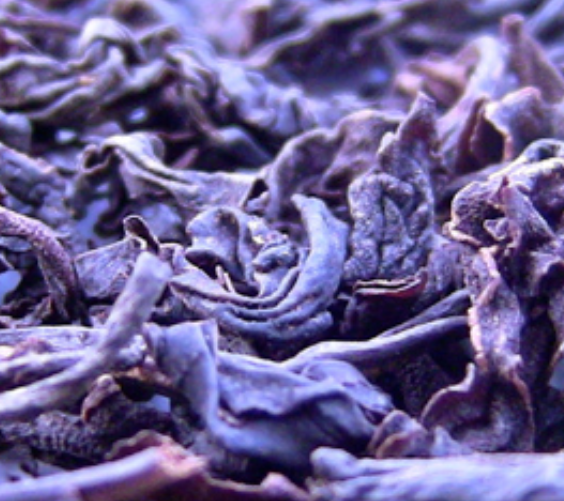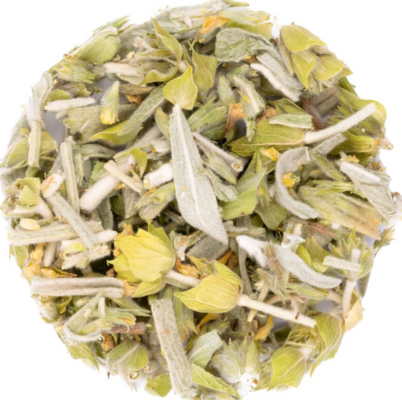We all know about black tea and green tea, and most of us, avid tea drinkers or not, have heard of rooibos, white, oolong or herbal tea. But what about purple tea? Only in recent years has tea made from purple leaves been on the market commercially, and it remains a very rare variety in tea shops and very few of us have it in our kitchen cupboard. So what is this mysteriously colored tea exactly?
Like all other types of tea (herbal teas excluded) purple leaf tea is produced out of the camellia sinensis plant. Generally, the leaves harvested from the tea plant are green, but in rare instances a genetic mutation gives the leaves a purple color. These mutated tea plants were first found growing wild in the Assam region of India and the Yunnan province in China at 4,500 to 7,500 feet. The long exposure to cold and UV light at this altitude led to a mutation in the plant which produces anthocyanin, an antioxidant also found in blueberries, responsible for it’s dark purple color.

After being discovered, these uniquely mutated plants were brought over to the Tea Research Foundation in Kenya just over 25 years ago, where they cultivated a strand to be grown commercially. Even so, the growing process is a delicate one, with only the best leaves making it through, which is why purple tea is still only produced in small batches. In recent years, other countries like India have started dabbling in the production of purple tea.
The flavor of purple tea is comparable with white tea; a mild, fresh, somewhat woodsy, but sweet taste. But what might catch people’s attention even more are the alleged health benefits of purple tea. Firstly, It is very low in caffeine, making it very suitable for a relaxing evening beverage. More importantly, the way in which purple tea grows produces very high levels of antioxidants, like the aforementioned anthocyanins. As a result, it is argued that the tea has some anti-inflammatory and antiviral properties, is good for cardiovascular health, reduces cholesterol levels, boosts cognitive function, and more.
Like with green tea, more research is needed to conclusively make any assertions about the health benefits of purple tea. But there is no harm in trying it, if not for the health benefits perhaps just out of curiosity.



